By Benjamin den Braber and Tom Jarvis
On 15 April, images appeared on Telegram showing injured civilians at a park in Mykolaiv in the aftermath of a cluster munitions strike.
Alongside these pictures, a video also appeared showing parts of the weapon, allegedly from nearby the strike’s epicentre.
The area targeted by the strike was a residential neighbourhood, with a park and cultural centres in its vicinity, indicating that there was no apparent military value to the strike’s location.
The attack was confirmed by the head of the Mykolaiv Regional Council Anna Zamazeeva.
Within hours of the Telegram posts, counterclaims emerged on the same platform that were attempting to discredit the images as “staged.”
Additionally, several pro-Russian accounts who self-identify as ‘journalists’ attempted to distort the reality of the attack.
For example, military correspondent of the Russian Tabloid, Komsomolskaya Pravda, Alexander Kots, has tried to draw comparisons of the paramedic response to the use of mannequins and actors in training.
An in-depth open-source analysis of available information has allowed the Eyes on Russia team (EOR) to determine key facts about the attack in Mykolaiv and establish what happened and when.
Notably, the EOR team were able to confirm the claims of bombing in Mykolaiv through multi-source reporting of red alerts in the area.
Additionally, geolocation and verification of images from the aftermath of the attack helped link these events to the red alerts. All this work discredits Kremlin narratives about what happened.
The Victims of the Attack on Mykolaiv
Images posted on social media after the missile strike in Mykolaiv indicated two civilian casualties near the chapel, close to the park where the attack took place.
Additionally, two more injured men were located approximately 50 metres north of the chapel.
Our analysis, seen in figure 1 below, shows the locations of the civilian casualties in relation to the targeted area by the missile.
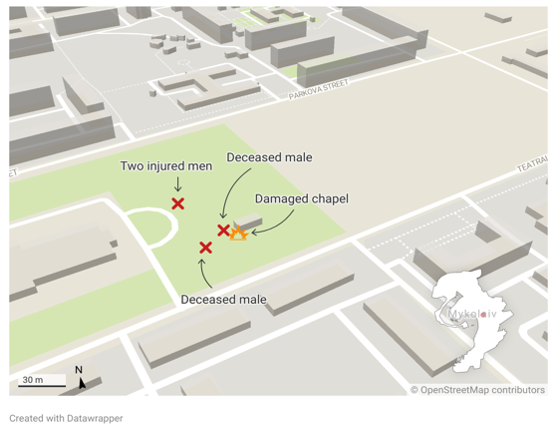
Figure 1: A map showing the coordinates of civilian casualties following the missile strike on Mykolaiv.
Two deceased men were geolocated to: 46.944151, 32.039555, and 46.944272, 32.039711.
Additionally, two injured men were geolocated to: 46.944563, 32.039384.
Emerging footage of a Red Cross Ambulance treating two injured victims, has been geolocated to a park in the centre of Mykolaiv: 46.944360, 32.039620. See figure 2 below.
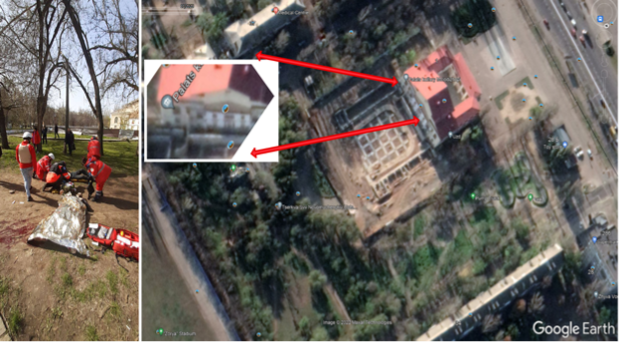
Figure 2: Geolocation of two victims receiving medical attention, matched with satellite imagery. Inset: perspective-warped satellite view of the face of the building to match with the image; geolocated to 46.944360, 32.039620.
A deceased body was also pictured near the chapel, close to figure 2 (WARNING: GRAPHIC IMAGERY).
Due to the proximity of the chapel, it is possible that the victim was killed because of the same missile strike.
The church is listed as “Tserkva Svv Novomuchenykiv Upts Mp” and was geolocated to: 46.94449647, 32.03956849.
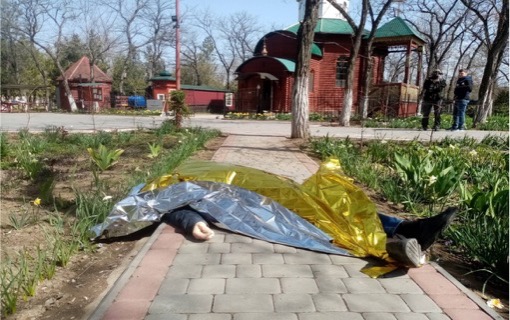
Figure 3: An image showing a deceased civilian near the chapel; geolocated to 46.94449647, 32.03956849.
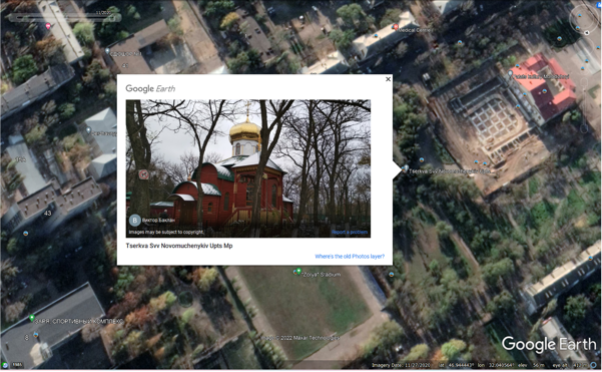
Figure 4: An image showing the location of the chapel on Google Earth; geolocated to: 46.94449647, 32.03956849.
Finally, A second deceased person was geolocated in the chapel compound, and across from the deceased individuals and two injured men referenced in figures 2 and 3.
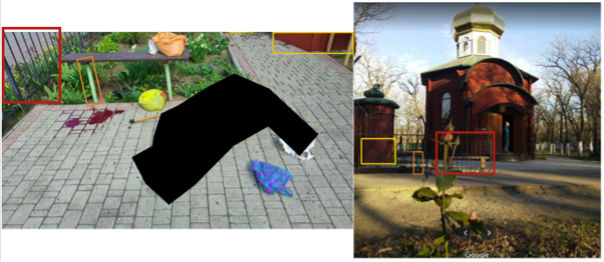
Figure 5: Footage of a deceased person in the chapel compound; geolocated to 46.94449647, 32.03956849.
The Munitions Used in the Attack
After the initial reports of casualties at a park in Mykolaiv, footage posted on Telegram and Facebook showed the cargo section of a rocket.
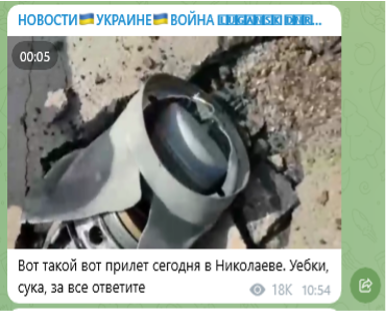
Figure 6: Footage of the cargo section of a rocket following the strike in Mykolaiv.
Thereafter, several images posted on Facebook showed more evidence of the munitions as well as another victim.
The images included pictures of the rocket and cylindrical fragments in the park. The fragments were matched with holes in walls nearby of a similar shape and size. Therefore, it is likely that the fragments were propelled by the strike.
Following close examination of the available footage, the EOR team was able to conclude that the rocket was a ‘9M55K’ type cluster munition. It was likely launched from a BM-30 Smerch heavy multiple rocket launcher. This can be seen in figure 7.
The ‘9M55K’ can be identified by the particular position of the vent holes on the cargo section of the rocket.
During Russia’s ongoing invasion of Ukraine, the ‘9M55K’ has been used numerous times by Russia as indicated by the investigative group, Bellingcat.
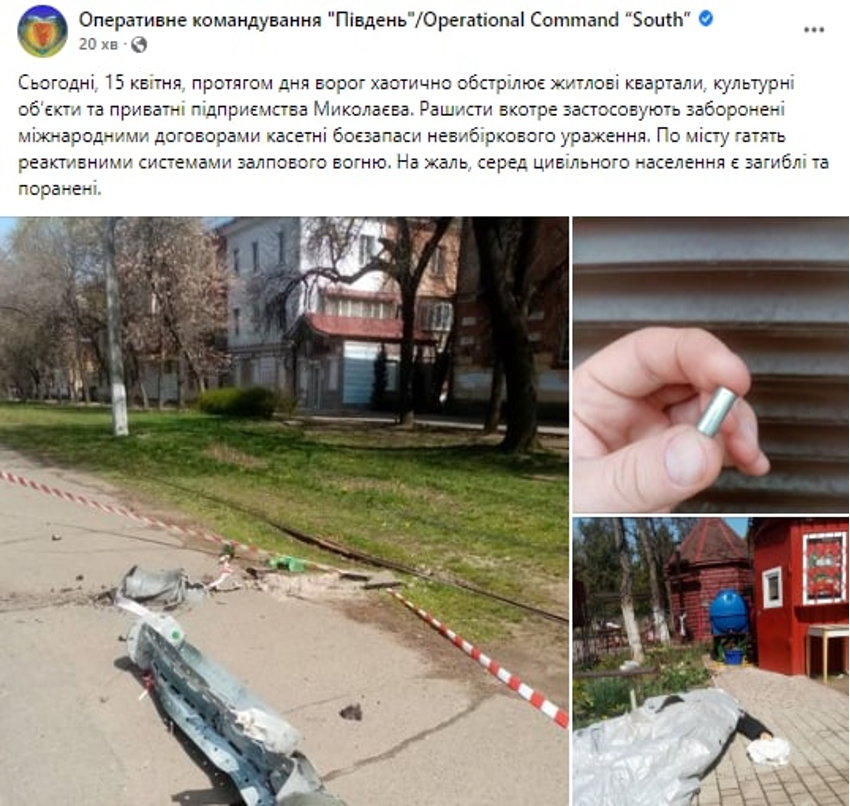
Figure 7: Footage showing the rocket fragments in the aftermath of the attack in Mykolaiv.
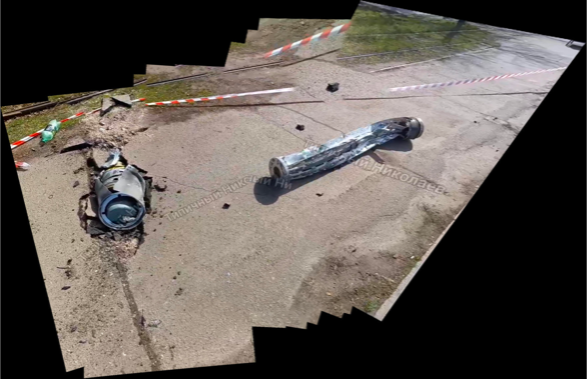
Figure 8: A Panorama overview of the cargo section of the ‘9M55K’ close to the area of civilian casualties.
The Cargo section of the ‘9M55K’ was geolocated to 46.941247, 32.038546; 350 metres South-West from the injured and deceased civilians at the park.
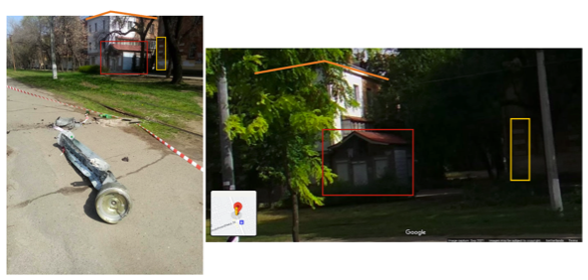
Figure 9: Geolocated footage of the rocket fragments in the aftermath of the attack in Mykolaiv.
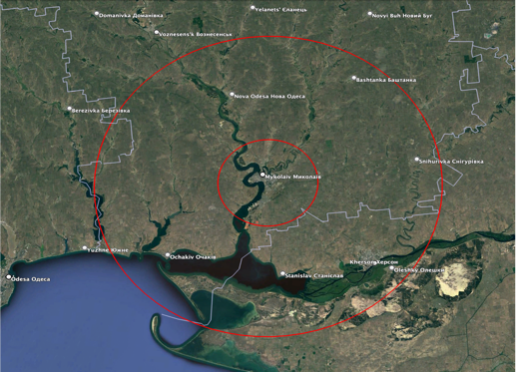
Figure 10: Range of the Smerch that fires the 300mm 9M55K rocket; small circle = 20KM, large circle = 70KM.
The 300mm ‘9M55K’ rocket is powered by a solid-propellant rocket motor and fired by a Smerch, which is a heavy multiple rocket launcher.
The firing range of the weapon system is between 20km and 70km
The attack in Mykolaiv has a notable lack of imagery depicting the tail section of the rocket, which contains the propellant and the engine.
It is unclear whether the propellant had been found and left undocumented or whether it was not seen. The absence of this section means that accurate analysis of the trajectory is not currently possible.
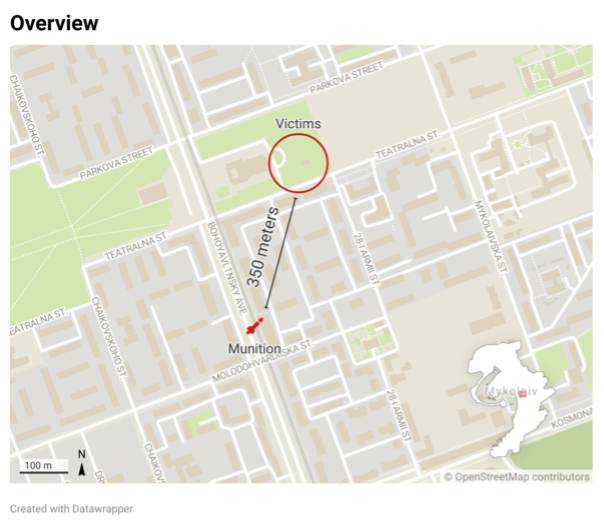
Figure 11: A map showing the geolocation of the cargo section of the ‘9M55K,’ and the distance from where injured and deceased civilians were located in Mykolaiv.
Timeline of Posts about the Mykolaiv Attack
The first post identified on Telegram relating to the attack in Mykolaiv was at 13:37 local time (10:37 GMT) 15 April 2022. It showed two injured civilians.
The first post also contained an individual with a handgun in his holster, indicating that he may be part of the authorities. Therefore, this footage could have been taken in the first response to the attack.
At 13:46 (10:46 GMT) more images were posted on Telegram, including of the Red Cross Ambulance service.
The first known footage containing part of the rocket was posted at 13:54 (10:54 GMT). At 14:01 (11:01 GMT) new footage emerged showing two parts of the rocket next to one another.
At 16:07 (13:07 GMT) the first post challenging the existence of the attack was published by Alexander Kots.
The same message was then shared across five more channels with a combined follower count of more than two million people. It is assumed that these accounts have many mutual followers so actual reach was lower.
Disinformation in the Aftermath of the Attack
Following the missile attack, the narrative on social media platforms attempted to taint the incident with unrelated information. This strategy was used to cast doubt over the attack itself.
For example, the original post included the images of the attack with the name of the city, Mykolaiv, in Russian.
Thereafter, the first Telegram post by Alexander Kots, discussed an article by The Times that showed an unrelated training by the “White Helmets,” where mannequins were used to mimic injured or dead civilians.
The ‘White Helmets’ is a volunteer organization conducting medical evacuations and search and rescue operations in Syria and Turkey.
The example of the ‘White Helmets’ was followed by a claim that: “Russian strikes certainly did not harm civilians, because they (“helmets”) do not provide medical assistance to anyone”, and that the standard ambulance crew is composed of cameramen and actors with no paramedics.”
The claims casting doubt on the strike were notable for two reasons. First, they all matched the same narrative, being distributed through reshares or direct copies of the text and imagery from the original post by Kots.
Second, they were rapidly published following the initial report. However, they were only amplified for a few hours before the topic was abandoned.
The latter may be indicative of attempts to sway opinion without drawing undue attention. It could also be due to the relative lack of public outcry about the missile attack, necessitating lower coverage of that topic.
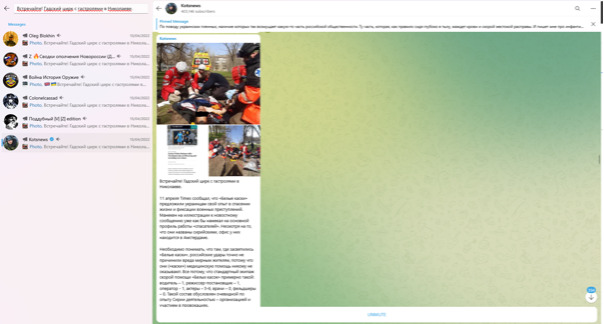
Figure 12: A screenshot of Telegram results for a search containing the title of the initial disinformation post by Alexander Kots about the Mykolaiv attack.
The following day saw more airstrikes against several facilities in the area.
The same channels that cast doubt on the strike in Mykolaiv, followed up with claims that successive strikes were not targeting non-military facilities.
Conclusion
Through verifying content posted by social media users about the aftermath of the strike in Mykolaiv, the EOR team was able to geolocate and verify the credibility of the attack.
The team utilized OSINT investigation methods and comparative analysis of the claims that were made about the attack, to verify the strike and civilian injury and death that took place in its aftermath.
It can also be concluded that a brief counter-narrative was produced by pro-Russian Telegram channels. These channels attempted to cast doubt on the emerging images and footage of the attack.
This attempt was not as pervasive as others, but it used a similar method of “half-truths” coupled with diversion methods to draw attention to other unrelated claims, and delegitimise the emerging information about the missile attack in Mykolaiv.

